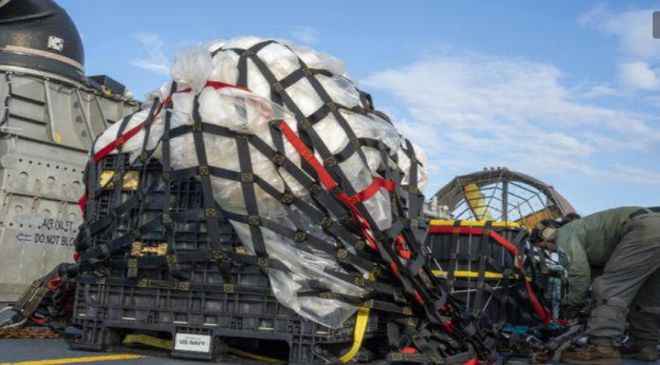America’s allies in Asia are raising their vigilance against high-altitude balloons after Washington accused Beijing of using them in a global spying program, ending years in which unannounced incursions by balloons have largely been tolerated in the region.
Also Read– China prepares to shoot down unidentified flying object as balloon saga takes a twist
Balloons of undeclared origin are seen each year around the Asia-Pacific region. One military officer in Taiwan with access to daily intelligence reports said suspected Chinese balloons are spotted by Taipei roughly once every quarter, mostly over Taiwan’s outlying islands near the Chinese coast.
Japan has confirmed foreign balloon sightings in each of the past three years.
The balloons are usually viewed by governments in the region as less of a security threat than satellite reconnaissance or incursions by Chinese military aircraft and armed ships, but government officials say they are raising their level of concern.
“We’ll make every effort to gather and analyze data [about balloons] with our allies,” Japanese government spokesman Hirokazu Matsuno said Tuesday.
Australian officials said they were unaware of any balloons over Australia but were monitoring the issue closely.
After Washington accused Beijing of sending a spy balloon over the continental U.S., it shared its findings with other countries and said Chinese balloons had made similar intelligence gathering missions over the territory of 40 nations.
Beijing says the balloon shot down by the U.S. over the Atlantic Ocean was a civilian device used for meteorological research that was blown off course.
Chinese Foreign Ministry spokesman Wang Wenbin on Tuesday called the shooting down a “preposterous and costly political showcase,” and reiterated Beijing’s allegation that the U.S. had flown balloons over China’s airspace several times since last year.
Also Read– Mexico defends its position against the blockade of Cuba and rules out tensions with the U.S.
“The U.S. side should examine this and provide China with an explanation,” Mr. Wang said. On Monday, U.S. officials denied flying balloons over China.
Asked about potential Chinese balloons over Japan, Mr. Wang said Tokyo should be objective and fair and “not follow the hyping up by the U.S. side.”
Some foreign balloons seen in the Asia-Pacific region are quickly identified as weather balloons. Such balloons usually drift no more than around 125 miles from the point of launch, according to the U.S. National Weather Service.
On Feb. 5, South Korea tracked a North Korean balloon that drifted into South Korean airspace but determined that it didn’t pose a threat. The balloon blew back over the border after a few hours. South Korean media identified it as a weather balloon.
Most of the balloons that Taiwan sees that appear to have come from China are for monitoring the weather, Maj. Gen. Huang Wen-chi, a Taiwan military intelligence official, said at a press conference on Tuesday.
He declined to give further details about how many and how often Chinese balloons have flown near Taiwan, but said Taipei hasn’t yet detected any similar to the one shot down off the coast of South Carolina last week.
In some cases, there is uncertainty about how to respond to mysterious suspected balloons. When a high-altitude balloon was seen over northern Japan in 2020, the object was treated as a risk to air traffic safety and tracked by a police helicopter. Japan’s defense minister said the balloon wasn’t a national security concern.
Video footage showed equipment slung below the balloon in a similar design to that under the suspected Chinese spy balloon shot down by the U.S.
After the U.S. accusation against China last week of balloon-based spying, a former Japanese defense minister, Taro Kono, wrote on his blog that foreign balloons would now be treated as a violation of Japan’s airspace.
Defense Minister Yasukazu Hamada confirmed Tuesday that Japan could deploy its military to shoot down foreign balloons if necessary.
Shen Ming-shih, a director at the military-backed Institute for National Defense and Security Research in Taipei, said balloons haven’t been a priority for Taiwan because it has had to deal with Beijing sending military aircraft near the island and firing missiles over Taiwan last summer following the visit by then-U.S. House Speaker Nancy Pelosi.
Mr. Shen also said there was a risk that aggressive action against balloons could trigger a military escalation. China considers self-ruled Taiwan a part of its territory and hasn’t ruled out trying to seize the island by force.
Also Read– Mexico defends its position against the blockade of Cuba and rules out tensions with the U.S.
Maj. Gen. Huang said Taiwan’s military would only take action to deal with balloons that it thinks are posing a clear national security threat. He also said the military was looking into a move by the U.S. military to increase the sensitivity of its radar to better identify balloons.
“If these U.S. practices can be used as our references, of course we will consider them,” he said.
Gen. Kunio Orita, a retired former Japanese fighter pilot, said Japan was well equipped to identify balloons because of the high density of its radar coverage.
Also Read:- India tried to rebrand Valentine’s Day as ‘Cow Hug Day.’ Here’s how it backfired
“Japan can detect almost all the balloons which come into its territory,” he said.









































